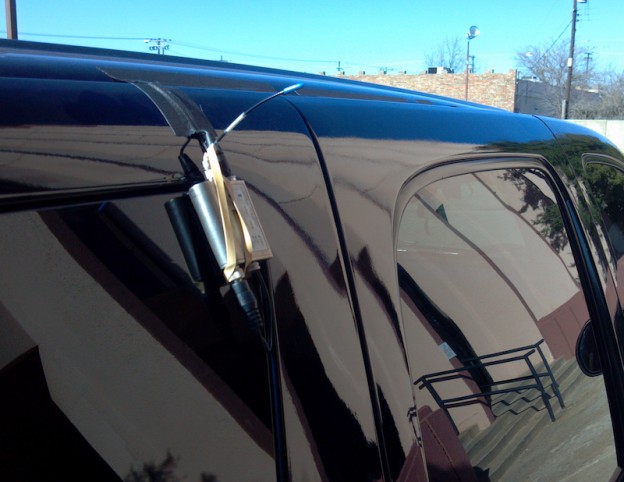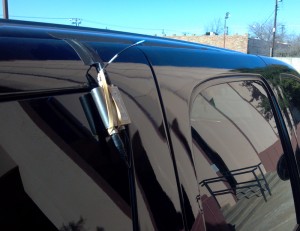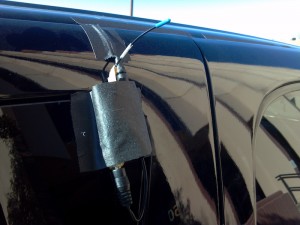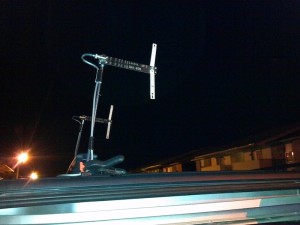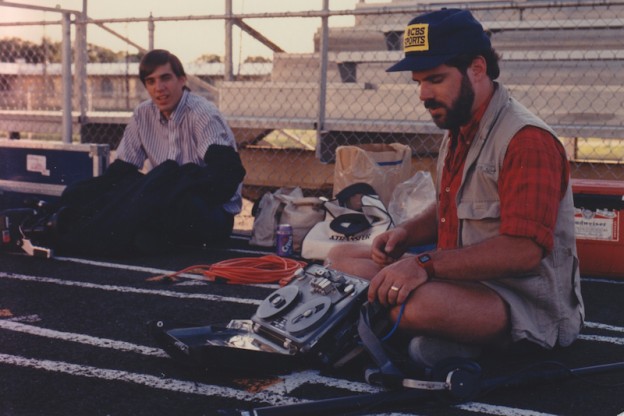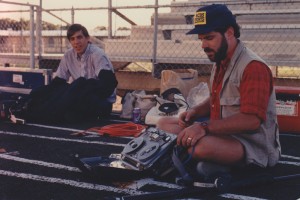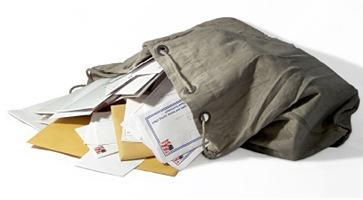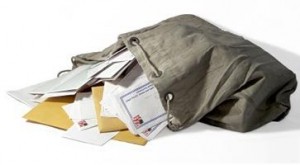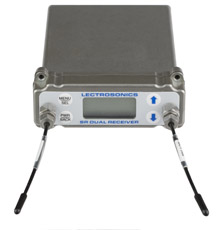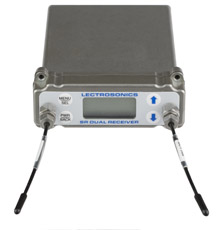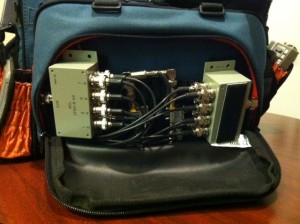TV Crew people often say that sound people are the strangest cast at the carnival. After years lurking around some sound mixer list serves, I can see how they would reach that conclusion. Check out www.jwsoundgroup.net and read some of the threads. I’ve never seen so many like-minded people go to the mat as they do, mixed with indulgent reverence for each other. A mostly happy yet dysfunctional family, with a cage in the basement.
If you want to go deeper , check out rec.arts.movies.production.sound on the ol’ Usenet. These days, Usenet is part of the internet wasteland, like CB radio. Nobody knew much about net-etiquette back then. Check out the posts of/about “Senator Mike” or “Roberto.” Mike would wail on any sound novice or “outsider” to go back from whence they came. Mike has softened up in his later years on jwsound, but occasionally, he still manages to let his old self shine. Back then, he and others were sometimes “banned” from the group, only to show up on other groups, like the Lectrosonics group, where he tells folks that their equipment is “broken”.
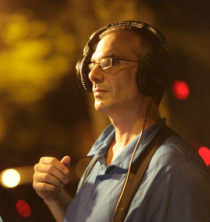
The Zen of headphone Face-Listening
This kind of relates to my experience as a ham radio operator. I always wanted to be a ham, since I was a kid. My dad told me he would buy me the equipment if I learned Morse code, and passed the technical test. I tried, but did not have the discipline, or mentoring, to see it through. But I finally got my license about 30 years later, and I learned Morse code. Morse code is obsolete. Just don’t tell any ham operators I said so.
Which is why as a ham, I ultimately never spent much time on the air. Those guys weren’t too friendly or fun to engage. Curmudgeonly, reclusive, often ultra-conservative, & not much in the way of social skills. They use words like “diabolical.” Instead of saying “goodbye,” they are just as apt to say “farewell.” Farewell? The below screen capture is Senator Mike himself, as an extra on Hawaii 5-0, sometime around the late 60’s -early 70’s:

Senator Mike worked on Hawaii 5-0 as both sound technican and on-camera extra.

Senator Mike Micheals Today.
I guess, like athletes, electronic gear-heads tend to size one another up on a continuing basis. Back in the 80’s, I met a sound mixer named James Tannenbaum on a film shooting in Austin. Jim’s very talented and successful. I respect him a great deal. I learned a lot from him. He’s written some great articles for Sound & Picture. He is undoubtedly one of the most unusual human beings I have ever met. I was the video assist operator, and a sound wannabe. No doubt I picked his brain to excess. When Jim didn’t appreciate my presence, he wouldn’t use normal cues to dismiss me. He would toy with my assumptions or quiz me into submission. Mr. Jean Clark, his chain-smoking boom operator, would delightfully join in. Some time soon, I will post some passages from a book Jim was writing at the time about sound mixing. Technically, much of it is obsolete. However, the advice Jim revealed about dealing with others on the set was hilarious. “Use your nearly-dead batteries script supervisor Comteks.” I paraphrase, but stuff like that.
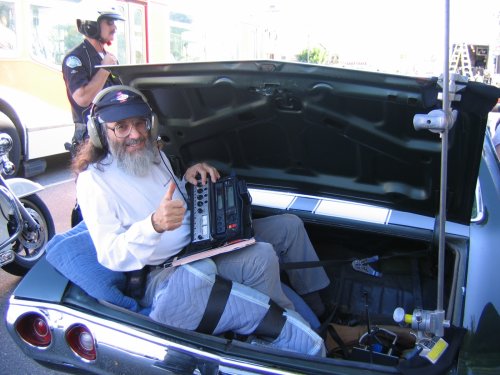
Jim Tannenbaum C.A.S. doing a car shot the old school way.
Anyway, among personalities on the set, I guess the sound people rank as the most unusual bunch. Maybe we were the kids who were picked last to be on the team. Loners. There must be some pent-up aggression among us, as evidenced by the tit-for-tat that lives in infamy on the sound mixer listserves. (Senator, that Usenet stuff never goes away, at least for now.)
To be honest, I’m probably just as strange as the rest of them. We are least qualified individually to judge how we are perceived by others. Also, I think my clients are just too diabolical to tell me the truth.
-by Pete Verrando www.txsound.com

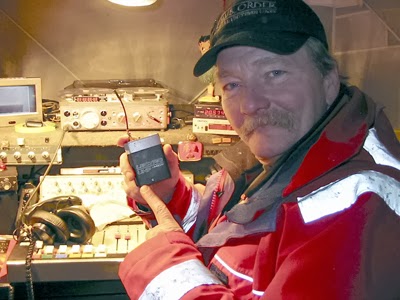
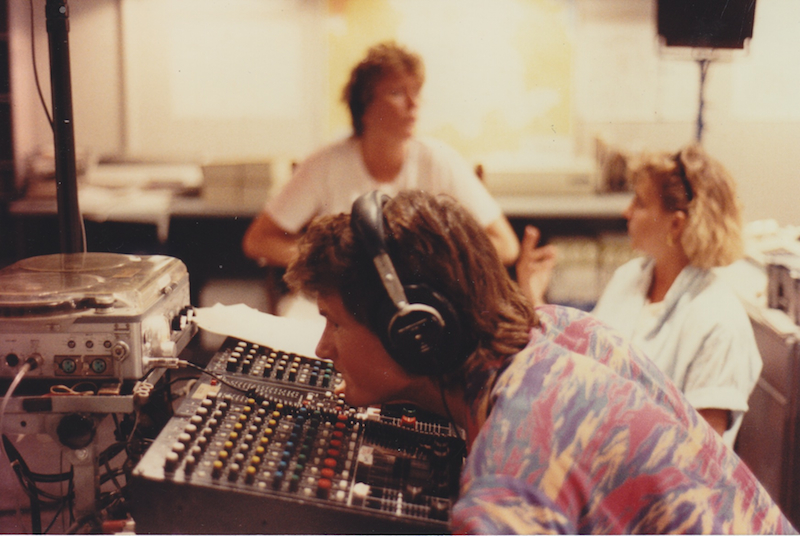




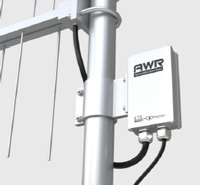
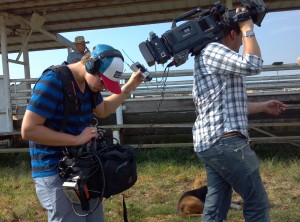
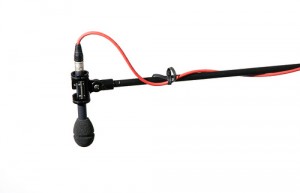
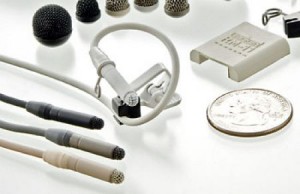 Ever wonder why sound mixers record and interview with both a lavalier mic and a boom microphone? The standard producer request, whenever an interview is recorded for television: Boom channel 1, lav channel 2, or visa-versa. Why 2 microphones for one sound source? The answer runs a little deeper than you may think. 20 or 30 years ago, 2 mics for a single interview was not done. The sound recordist chose his weapon, a lav or a boom, and recorded with that. The producer asked no questions. There was only one, recordable mono track anyway! Back in the news-film, documentary days, or anything that preceded video, the audio went to the mono Nagra track, or the single audio channel on whatever sound amplifier (Auricon, Cinema Products, etc) was driving a sound-on-film system. Not only were two mics unnecessary, there weren’t two audio tracks for two mics. Eventually, Two tracks of audio became available when 3/4” u-matic, stereo Nagra, or 1” field recording came into being. Yet two mics for a single-person interview was still hardly contemplated. Enter the days of Tabloid and Reality television. And, the need for low-cost programming to fill 80 channels of cable/satellite TV. The small army of production mixers across the US, in their lofty, revered, hard-earned union positions, were no longer enough in number to meet the demand for the forthcoming tidal wave of cheap television. However, there were plenty of young, inexperienced crew people flooding into the production work force, many never having picked up a boom pole or lavalier mic. They worked for cheap, learned by trial and error, clipping lavs on collars, happily chasing around cameras with their little mixers. Recording interviews with whatever audio gear the cameraman owned, or was thrown in the back of the truck. You can imagine what came next. Horrible audio came flooding into the edit bays. Poorly cued booms, lavs placed too low or too high, or no mic at all- when the new guy forgot to switch from the camera mic! If a mic battery died, or a location was noisy, the editor got what he got- 1 channel of crappy audio from one mic, recorded by a beginner. It didn’t take long for word to come down on high. Make those jobs idiot-proof, because we’ve got an army of idiots recording our field audio! Thus came the new protocol- record lavalier on 1 channel, and boom on the other. In Post, now we can choose the less horrible of the two! The senior sound guys balked- they knew how to get good interview audio with one mic, and no memo from above was going to tell them how to do the job. Regardless, the protocol stuck, and is still with us today. I don’t begrudge the method at all. Today, having both mics going makes sense in a fail-safe kind of way- most of the time. Also, for fun, we get to A/B our boom and lavs during the interview. The on-set mentality is: Get it right, get it in spades, and if you can, postpone making a decision about anything. Works for me! All I ask is: Please, Mr Editor, pick one or the other, and don’t mix the two down to mono! – by Pete Verrando
Ever wonder why sound mixers record and interview with both a lavalier mic and a boom microphone? The standard producer request, whenever an interview is recorded for television: Boom channel 1, lav channel 2, or visa-versa. Why 2 microphones for one sound source? The answer runs a little deeper than you may think. 20 or 30 years ago, 2 mics for a single interview was not done. The sound recordist chose his weapon, a lav or a boom, and recorded with that. The producer asked no questions. There was only one, recordable mono track anyway! Back in the news-film, documentary days, or anything that preceded video, the audio went to the mono Nagra track, or the single audio channel on whatever sound amplifier (Auricon, Cinema Products, etc) was driving a sound-on-film system. Not only were two mics unnecessary, there weren’t two audio tracks for two mics. Eventually, Two tracks of audio became available when 3/4” u-matic, stereo Nagra, or 1” field recording came into being. Yet two mics for a single-person interview was still hardly contemplated. Enter the days of Tabloid and Reality television. And, the need for low-cost programming to fill 80 channels of cable/satellite TV. The small army of production mixers across the US, in their lofty, revered, hard-earned union positions, were no longer enough in number to meet the demand for the forthcoming tidal wave of cheap television. However, there were plenty of young, inexperienced crew people flooding into the production work force, many never having picked up a boom pole or lavalier mic. They worked for cheap, learned by trial and error, clipping lavs on collars, happily chasing around cameras with their little mixers. Recording interviews with whatever audio gear the cameraman owned, or was thrown in the back of the truck. You can imagine what came next. Horrible audio came flooding into the edit bays. Poorly cued booms, lavs placed too low or too high, or no mic at all- when the new guy forgot to switch from the camera mic! If a mic battery died, or a location was noisy, the editor got what he got- 1 channel of crappy audio from one mic, recorded by a beginner. It didn’t take long for word to come down on high. Make those jobs idiot-proof, because we’ve got an army of idiots recording our field audio! Thus came the new protocol- record lavalier on 1 channel, and boom on the other. In Post, now we can choose the less horrible of the two! The senior sound guys balked- they knew how to get good interview audio with one mic, and no memo from above was going to tell them how to do the job. Regardless, the protocol stuck, and is still with us today. I don’t begrudge the method at all. Today, having both mics going makes sense in a fail-safe kind of way- most of the time. Also, for fun, we get to A/B our boom and lavs during the interview. The on-set mentality is: Get it right, get it in spades, and if you can, postpone making a decision about anything. Works for me! All I ask is: Please, Mr Editor, pick one or the other, and don’t mix the two down to mono! – by Pete Verrando 